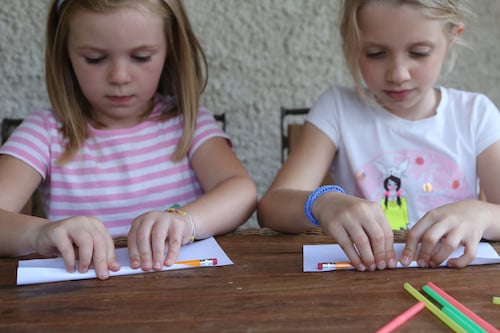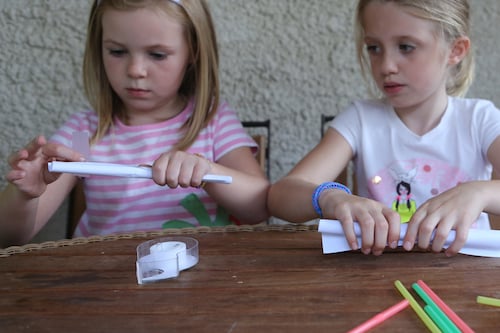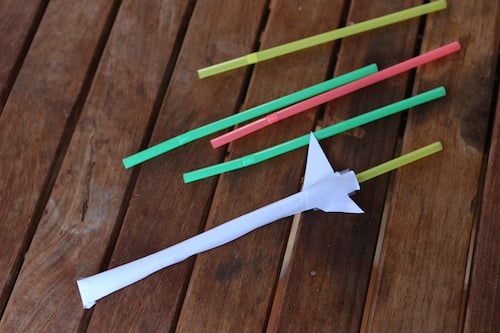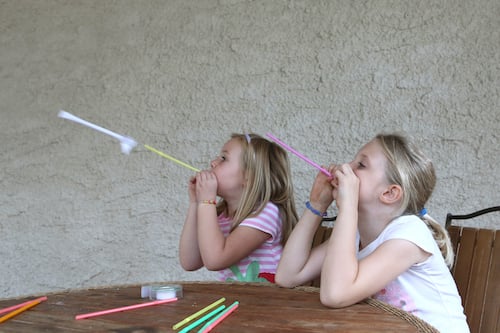Got drinking straws? Your kids can use paper and tape to design breath-powered rockets in minutes. See whose rocket can fly the farthest!
Tip: Young kids may need assistance measuring and taping.
You’ll Need
- plastic drinking straws
- printer paper
- scissors
- tape
- markers (optional)
How to Make the Rockets
Step 1: To create your rocket, have your child cut a strip of printer paper about 2 inches (6 cm) wide and 8 ½ inches (21.5 cm) long. This is great measurement practice!

Step 2: Help your child wrap the rectangle of paper tightly around a pencil the long way and tape it together, so that it holds its shape.

Step 3: Remove your rocket from the pencil, fold one end over and tape it down. This will be the rocket's nose.

Step 4: Cut triangles from paper to make fins and tape them on the bottom of your rocket, opposite the nose (see photo, above.) Fins work best taped on at right angles.
Step 5: Let your child decorate your rocket with markers. Help them look up the NASA.gov website to see what real rockets look like, and learn about their space missions.

Step 6: Put your rocket over the end of a straw and use the force of your breath to launch it!
Step 7: (Optional) Ask your child what they think will happen if you change the launch angle. Try it! Let them measure and record how far their rocket flies. Make longer and shorter rockets to see what works best.
The Science Behind the Fun
Paper rockets demonstrate how real rockets fly through the atmosphere.
Drag is what scientists call the force of air getting in your rocket’s way. And thanks to gravity, your rocket’s weight pulls it back down to Earth. The lighter you make your rocket (less paper, less tape) and the less drag it has, the farther it will go!
Fins help to stabilize a rocket’s flight. The size and design of the fins on a rocket affect how well it can be controlled.
You can find more experiments like this one at kitchenpantryscientist.com, and in my books Kitchen Science Lab for Kids (Quarry Books) and Outdoor Science Lab for Kids (Quarry Books).
© Quarry Books, 2016/Kitchen Science Lab for Kids
Featured Photos Credit: © Quarry Books
